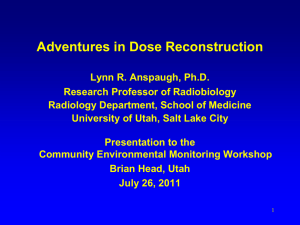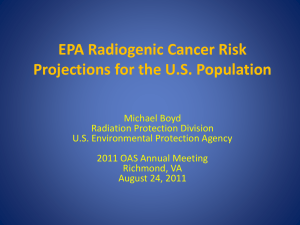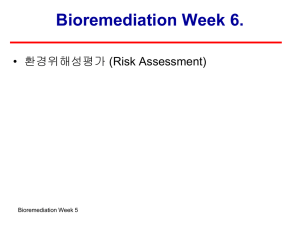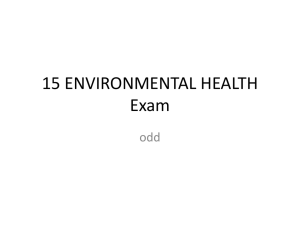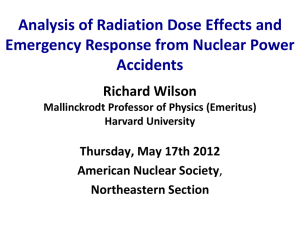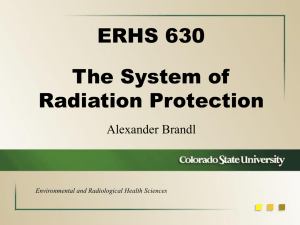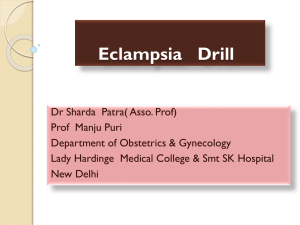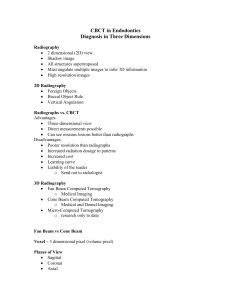Estudo comparativo das doses de radiação em cbct
advertisement
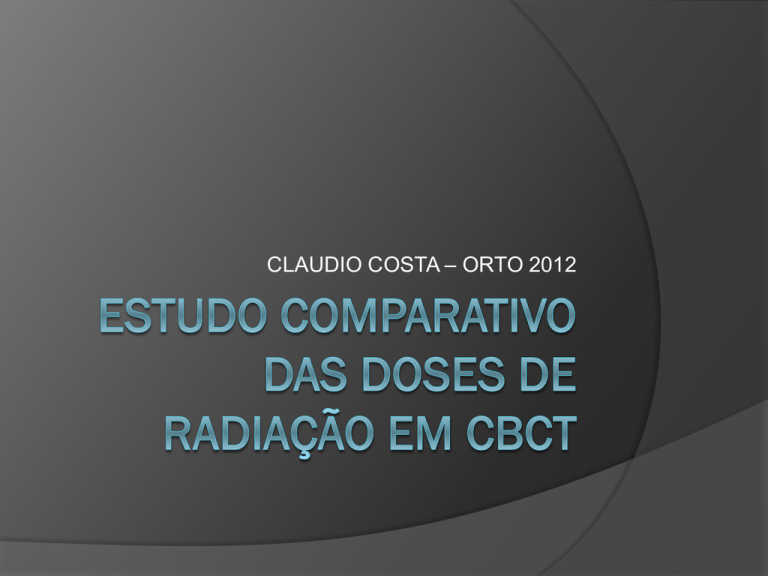
CLAUDIO COSTA – ORTO 2012 Technique Effective Dose in uSv 1990 ICRP tissue weights Dose as multiple of single Panoramic Dose (ICRP1990) Dose in days of per capita background dose Dose in terms of % medical CT equivalent Dose in terms of % annual per capita background dose NewTom3G - Full (12”) FOV* 45 7 4 2.1% 1.2% NewTom3G - chin tilt & Thyroid Shield* 28 4 3 1.3% 0.8% CB Mercuray - F (12”) FOV 10 mA-100 kV* 477 74 48 22.7% 13.2% CB Mercuray - P (9”) FOV* 289 45 29 13.8% 8.0% CB Mercuray - I (6”) FOV (maxillary)* 169 26 17 12.0% 4.7% CB Mercuray - I (6”) FOV w/ chin tilt* 125 19 12 5.9% 3.5% i-CAT - Full (12”) FOV* 135 21 13 6.4% 3.7% i-CAT - chin tilt & thyroid shield* 57 9 6 2.7% 1.6% Panoramic (OrthoPhos Plus DS)† 6 1 1 0.3% 0.2% CT Maxillo-Mandibular‡ 2100 385 243 100.0% 58.3% CT Maxillary‡ 1400 164 103 100.0% 38.9% *Ludlow JB, Davies-Ludlow LE, Brooks, SL, Howerton B. Dosimetry of 3 CBCT Units for Oral and Maxillofacial Radiology. Abstract accepted for 15th International Congress of the International Association of Dento-Maxillo-Facial Radiology, Cape Town, South Africa June 2005. †Ludlow JB, Davies-Ludlow LE, Brooks, SL. Dosimetry of two extraoral direct digital imaging devices: NewTom cone beam CT and Orthophos Plus DS panoramic unit. Dentomaxillofacial Radiology 2003;32:229-34 ‡ Ngan DC, Kharbanda OP, Geenty JP, Darendeliler MA. Comparison of radiation levels from computed tomography and conventional dental radiographs. Aust Orthod J. 2003;19:67-75 RADIOPROTEÇÃO EM CBCT Artigo mais recente – Julho 2012 Dentomaxillofac Radiol. 2012 Jul;41(5):373-8. Dose reduction of cone beam CT scanning for the entire oral and maxillofacial regions with thyroid collars. Qu XM, Li G, Sanderink GC, Zhang ZY, Ma XC. Source Department of Oral and Maxillofacial Radiology, Peking University School, Beijing, China. Abstract OBJECTIVE: The aim of this study was to evaluate the influence of thyroid collars on radiation dose during cone beam CT (CBCT) scanning. METHODS: Average tissue-absorbed dose for a NewTom 9000 CBCT scanner (Quantitative Radiology, Verona, Italy) was measured using thermoluminescent dosemeter chips in a phantom. The scans were carried out with and without thyroid collars. Effective organ dose and total effective dose were derived using International Commission on Radiological Protection 2007 recommendations. RESULTS: The effective organ doses for the thyroid gland and oesophagus were 31.0 µSv and 2.4 µSv, respectively, during CBCT scanning without a collar around the neck. When the thyroid collars were used loosely around the neck, no effective organ dose reduction was observed. When one thyroid collar was used tightly on the front of the neck, the effective organ dose for the thyroid gland and oesophagus were reduced to 15.9 µSv (48.7% reduction) and 1.4 µSv (41.7% reduction), respectively. Similar organ dose reduction (46.5% and 41.7%) was achieved when CBCT scanning was performed with two collars tightly on the front and back of the neck. However, the differences to the total effective dose were not significant among the scans with and without collars around the neck (p = 0.775). CONCLUSIONS: Thyroid collars can effectively reduce the radiation dose to the thyroid and oesophagus if used appropriately. J Am Dent Assoc. 2008 Sep;139(9):1237-43. Patient risk related to common dental radiographic examinations: the impact of 2007 International Commission on Radiological Protection recommendations regarding dose calculation. Ludlow JB, Davies-Ludlow LE, White SC. Source Department of Diagnostic Sciences, University of North Carolina School of Dentistry, Chapel Hill, NC 275997450, USA. jbl@email.unc.edu Abstract BACKGROUND: In 2007, the International Commission on Radiological Protection (ICRP) revised estimates of the radiosensitivity of tissues including those in the maxillofacial region. The authors conducted a study to reassess patients' risk related to common dental radiographic exposures using the 2007 ICRP recommendations. METHODS: The authors used a tissue-equivalent head phantom to measure dose. They calculated effective doses by using both 1990 and revised 2007 ICRP recommendations. Effective dose is a calculation that takes into consideration the different sensitivities of organs to long-term effects from ionizing radiation. It is the preferred method for comparing doses between different types of exposures. RESULTS: Effective doses (per the 2007 ICRP) in microsieverts were as follows: full-mouth radiographs (FMX) with photostimulable phosphor (PSP) storage or F-speed film with rectangular collimation, 34.9 microSv; four-image posterior bitewings with PSP or F-speed film with rectangular collimation, 5.0 microSv; FMX using PSP or Fspeed film with round collimation, 170.7 microSv; FMX with D-speed film and round collimation, 388 microSv; panoramic Orthophos XG (Sirona Group, Bensheim, Germany) with charge-coupled device (CCD), 14.2 microSv; panoramic ProMax (Planmeca, Helsinki, Finland) with CCD, 24.3 microSv; posteroanterior cephalogram with PSP, 5.1 microSv; and lateral cephalogram with PSP, 5.6 microSv. These values are 32 to 422 percent higher than those determined according to the 1990 ICRP guidelines. CONCLUSIONS: Although radiographs are an indispensable diagnostic tool, the increased effective doses of common intraoral and extraoral imaging techniques are high enough to warrant reconsideration of means to reduce patients' exposure. CLINICAL IMPLICATIONS: Clinicians can reduce patients' dose substantively by using digital receptors or F-speed film instead of D-speed film, rectangular collimation instead of round collimation and radiographic selection criteria. RADIOPROTEÇÃO EM CBCT Conclusões As doses de radiação em CBCT são menores do que as utilizadas em TC médicas single e multislice Não existe necessidade de proteção adicional ao avental de chumbo O protetor de tireóide ajuda a reduzir a dose, porem interfere na observação do exame, sendo essa redução estatisticamente não significante (5%) Os óculos de proteção para o cristalino não são citados na literatura, além de interferir na observação das imagens da região.


